The Link Between Diet and Sleep: Foods That Promote Better Rest – Better Sleep Council

Ever notice how some foods leave you feeling wired, while others make you ready to hit the pillow? Turns out, what we snack on has a big say in how well we snooze. By picking the right bites and dodging the sleep stealers, we’re setting ourselves up for those dreamy nights. It’s pretty cool how tweaking what’s on our plate can be a game-changer for our sleep game. Let’s make getting those Z’s as easy as pie.
The Science of Sleep and Nutrition
Recent studies, from the NIH shed light on how dietary choices impact our sleep hormones and patterns. This research reveals that certain nutrients directly influence the mechanisms that regulate sleep, suggesting that our diet plays a significant role in how well we rest at night.
Foods That Promote Sleep
Several foods are known for their sleep-enhancing properties, thanks to their nutrient content. For instance:
- Almonds and Walnuts: Rich in magnesium and melatonin, aiding in muscle relaxation and sleep regulation.
- Cherries: One of the few natural sources of melatonin, helping regulate sleep cycles.
- Fatty Fish: High in omega-3 fatty acids and vitamin D, which have been linked to better sleep quality due to their role in serotonin production.
- Kiwi: Contains antioxidants and serotonin, which may improve sleep onset and duration.
The Better Sleep Council’s blog post “The Sleep Diet” further explores how sleep and digestion are interconnected, offering insights into how a balanced diet can support restful nights
Foods to Avoid Before Bedtime
Conversely, certain foods and beverages can disrupt sleep, including:
- Caffeine: Stimulates the nervous system, making it harder to fall asleep.
- Alcohol: Although it may initially induce sleepiness, it can interrupt sleep cycles later in the night.
- Heavy or Spicy Foods: Can cause discomfort and indigestion, leading to disrupted sleep.
Incorporating Sleep-Inducing Foods into Your Diet
Integrating sleep-promoting foods into your diet doesn’t have to be a challenge. Simple changes, such as including a kiwi or a handful of nuts in your evening snack, can make a significant difference. Timing your meals and snacks to avoid heavy digestion close to bedtime can also enhance sleep quality.
The relationship between diet and sleep is complex yet incredibly impactful on our well-being. By experimenting with sleep-enhancing foods and mindful avoidance of those that disrupt rest, you can discover the optimal dietary balance for improved sleep quality. Embrace the journey towards better rest through thoughtful dietary choices, and let the quest for a peaceful night’s sleep be a delicious one.
References:
Choosing a Nontoxic Bed Frame for Your Bed
Are you in the market for a new bed frame? If so, have you considered a nontoxic option? In this comprehensive article, we will walk you through everything you need to know about why it’s an important factor and how to select a nontoxic bed frame for your bed.
Quality sleep is critical to how well we feel and how healthy we are. By creating a clean and environmentally friendly sleeping environment, you may experience fewer disturbances during the night to wake up feeling more refreshed and rejuvenated each morning.
For this reason, it is important to consider all aspects of our sleep environment, including the bed frame. While most people are aware of the potential toxins in their mattresses, not many realize that their bed frames can also be a source of harm. Traditional bed frames are often made with materials that contain toxic chemicals, such as formaldehyde, benzene, and flame retardants, which can be dangerous when released into the air we breathe.
In this article, we will explore various nontoxic materials that are commonly used in bed frames, such as solid wood, and other important factors to consider, including materials, design features, and eco-friendly manufacturing processes.
Don’t compromise your health when it comes to your sleep. Follow our advice to find the perfect nontoxic bed frame for your bed and enjoy a restful night’s sleep with peace of mind.
The Importance of Choosing a Nontoxic Bed Frame
When it comes to our health, we often focus on the food we eat and the personal products we use. However, we tend to overlook the potential dangers lurking in our bedrooms, particularly in our beds. Many traditional bed frames are made from materials such as particleboard or plywood that contain formaldehyde and other volatile organic compounds (VOCs). These harmful chemicals can off-gas over time, contributing to poor indoor air quality and potentially causing a range of health issues such as respiratory irritation, headaches, and even serious conditions like cancer.
One of the key benefits of choosing a nontoxic bed frame is the elimination of volatile organic compounds (VOCs). By opting for a nontoxic bed frame, you can minimize exposure to these harmful chemicals and immediately create a healthier sleep environment.
In addition to VOCs, traditional bed frames may also contain flame retardants. While flame retardants are intended to reduce the risk of fire, they have been linked to various health problems, including hormonal disruptions and developmental issues in children. Choosing a nontoxic bed frame ensures that you can sleep comfortably without worrying about the potential health risks associated with these chemicals.
When it comes to our overall well-being, sleep plays a vital role. By selecting a nontoxic bed frame, you are prioritizing your health and creating a safe sanctuary where you can rest and rejuvenate.
The Common Toxins Found in Bed Frames
To make an informed decision when choosing a nontoxic bed frame, it’s important to understand the common toxins that can be found in traditional bed frames. By familiarizing yourself with these substances, you can better identify and avoid them when selecting a nontoxic alternative.
One of the most common toxins found in bed frames is formaldehyde. Formaldehyde is a colorless gas with a strong odor that is often used in the manufacturing of wood products, including bed frames. Prolonged exposure to formaldehyde can cause respiratory issues, eye irritation, and even cancer. When choosing a nontoxic bed frame, it’s essential to opt for one that is certified formaldehyde-free.
Another toxin to watch out for is benzene, which is a known carcinogen. Benzene can be released from certain materials used in bed frames, such as paints, stains, and adhesives. Long-term exposure to benzene can lead to serious health problems, including leukemia and other cancers. Look for bed frames that are labeled benzene-free to ensure a safe sleeping environment.
Flame retardants are another group of toxins commonly found in bed frames. These chemicals are added to materials to reduce the risk of fire. However, many flame retardants have been linked to health issues, including hormone disruption, reproductive problems, and developmental delays in children. When choosing a nontoxic bed frame, opt for those that are free from flame retardants or use natural alternatives.
Being aware of these common toxins can help you make informed choices when purchasing a bed frame. Choose a nontoxic bed frame to prioritize your health and well-being.
Sustainable, Solid Wood
Solid wood bed frames are a popular choice for those seeking a nontoxic option. While known for their durability and strength, they are also popular for being attractive, warm, and durable. Wooden bed frames can be made from sustainably sourced wood, too, such as oak, maple, or walnut.
One of the advantages of solid wood bed frames is their natural beauty. The grains and patterns of the wood add a touch of elegance to your bedroom. Additionally, solid wood frames are less likely to off-gas harmful chemicals compared to frames made with synthetic materials.
When choosing a solid wood bed frame, make sure to opt for one that is made with FSC-certified wood. The Forest Stewardship Council (FSC) certification ensures that the wood used in the frame comes from responsibly managed forests. The more natural the color the better, too. Paints and varnishes often contain VOCs which you want to avoid.
Benefits of Metal-Free Bed Frames
Metal bed frames are another popular option for those seeking a nontoxic and sturdy bed frame. They are typically made with materials such as steel or iron, which are known for their durability and longevity, however, they may not be the best choice for your health.
Metal frames can contain toxic coatings or finishes that can release harmful substances into the air over time. Additionally, metal frames can conduct electromagnetic fields (EMFs) which may disrupt your sleep patterns and negatively affect your overall well-being. Opting for a metal-free bed frame made from sustainable materials like reclaimed wood can help you avoid potential health hazards while also contributing to environmental sustainability.
Feng shui principles also advise avoiding bed frames made of metal and recommend those made of wood.
Function vs Fashion
When it comes to home furnishings and the bedroom is no exception, people tend to focus on fashion rather than function. We urge people to consider both. You don’t need to compromise comfort and support when it comes to your bed. First, be sure that the bed frame is appropriate for your mattress. After all, the sole purpose of the bed frame is to hold your mattress in place. It should be solid, sturdy, and not squeak. Your nightly movements shouldn’t cause any sounds from your mattress or bed frame.
We further recommend a low-profile bed frame for the ease of getting into and out of bed. It’s an activity you do twice daily, every day of your life. Make it a pleasure rather than a chore. Your ease of access is the first step on the journey to sleep-time; it shouldn’t begin with a challenge.
Nontoxic Bed Frame Checklist
When it comes to selecting a nontoxic bed frame for your adjustable bed, there are several factors to consider ensuring you make the best choice for your health and well-being. By keeping these factors in mind, you can find a bed frame that aligns with your values and promotes a safe and healthy sleep environment.
We put together a checklist to help you with your search for the best nontoxic bed frame for your healthy sleep. Look for bed frames that are:
- Chemical-free
- Metal-free
- Sustainable
- Solid support
- Low profile
- Eco-friendly manufacturing
- Ease of Assembly and Maintenance
Prioritizing Health and Sustainability in Your Bedroom
SAMINA is a European brand that stands for sustainable functional design. Our bed frames are designed for solid, steady support of the SAMINA sleep system. They are not only nontoxic and metal-free, but they are easy to assemble without tools. Furthermore, they are adjustable bed frames that can slant for inclined sleeping or not for traditional horizontal positioning.
By opting for a nontoxic bed frame made without harmful chemicals or metal and using sustainable solid wood, you can eliminate potential health hazards and protect your sleep sanctuary.
Embrace a healthier sleep environment today. Learn more about SAMINA bed frames. Contact us for a complimentary sleep consultation >>> click here.
Daylight Saving Time 2024: Your Guide to Navigating Time Changes – Better Sleep Council

As winter fades and spring approaches, Daylight Saving Time (DST) in 2024 once again becomes a topic of interest. The tradition of “springing forward” in March and “falling back” in November could see a significant change with the consideration of the Sunshine Protection Act, which raises the concept of making Daylight Saving Time permanent. So what if we could enjoy that extra hour of daylight all year round? As we question this possibility, let’s unpack what DST is all about, how it affects us, and what changes might be on the horizon.
Understanding Daylight Saving Time
Daylight Saving Time was created to extend evening daylight and reduce the need for artificial light. The idea, originating from George Vernon Hudson’s 1895 proposal, gained popularity as a way to save energy during World War I. Still today, the practice involves setting our clocks forward by one hour in the spring and back by one hour in the fall, although not every state in the US observes Daylight Saving Time.
Daylight Saving Time and Your Health and Wellbeing
Adjusting our clocks can throw off our body’s internal timekeeper, or circadian rhythm. Poor sleep – or having a disrupted sleep pattern – can influence different aspects of our health, from how we manage stress and our mood, to more physical concerns like heart health. Recognizing the connection between sleep and health is more important than ever during changes like Daylight Saving Time. By embracing good sleep habits and making small changes to our environment, we can help ease the transition into and out of DST, keeping our bodies and minds in better harmony throughout the year.
Adjusting to the Daylight Saving Time Change
Adapting to DST doesn’t have to be a struggle. Our detailed guides on adjusting to daylight saving time offer tailored advice for easily navigating the adjustments. Here are some pointers to help you transition smoothly:
- Ease into the change – Start adjusting your sleep schedule by 10-15 minutes each day leading up to the time change. This can help minimize the impact on your sleep pattern.
- Seek out morning light – Exposure to natural light in the morning can help reset your internal clock and make it easier to wake up.
- Establish a relaxing nighttime routine – Limit screen time and create a calming environment to wind down before bed.
- Keep a consistent sleep schedule – Going to bed and waking up at the same time every day can help regulate your body’s clock.
- Optimize your bedroom environment – Make sure your sleeping space is conducive to rest, keeping it cool, dark, and quiet.
A Closer Look at The Sunshine Protection Act
The Sunshine Protection Act is a piece of legislation that’s sparking a lot of discussions. It aims to make daylight saving time the new standard, eliminating the need to change our clocks twice a year. Supporters believe this could lead to better mental health, more consistent energy usage, and even economic benefits by aligning our daily activities more closely with daylight hours.
State Responses to Daylight Saving Time
Different states have different responses to Daylight Saving Time. Arizona and Hawaii don’t participate in the time change, while states like Florida and California have expressed interest in adopting DST year-round, pending federal approval. The mix of approaches to DTS is a reflection of the geographic, economic, and social factors involved.
Here’s a closer look at state-level responses to DST:
- Arizona and Hawaii – These states do not observe DST and have remained on standard time year-round, citing reasons like energy conservation and minimal benefit from additional evening daylight.
- California – Passed a proposition allowing the legislature to change policy as long as federal law changes, paving the way for a possible permanent DST
- Florida – The “Sunshine Protection Act” passed in 2018 keeps DST going throughout the year. That said, it needs federal clearance to take effect.
- Oregon, Washington, and Idaho – In these states, adopting DST year-round is conditional on the approval of Congress.
- Texas – There has been a legislative discussion about abolishing DST altogether, favoring standard time throughout the year.
- New England States – Several states in this region have considered shifting to the Atlantic Time Zone and opting out of DST, giving them an extra hour of daylight in the evening.
- Tennessee and Arkansas – These states had passed resolutions adopting DST year-round pending federal permission.
Preparing for Daylight Saving Time Changes Ahead
As 2024 unfolds, the idea of adopting Daylight Saving Time (DST) permanently encourages us to consider how our lives are intertwined with the cycles of time and light. Finding effective ways to adjust to time changes is crucial. Whether the Sunshine Protection Act becomes law or not, being prepared to adapt is important for our well-being. This conversation sheds light, no pun intended, on our connection to the environment as well as our need for flexibility in our daily routines. Embracing change, finding balance, and ensuring our health and happiness are in sync with time are fundamental steps to a well-rounded life.
Sleep Cool on a Budget: Affordable Hacks for Hot Sleepers – Better Sleep Council
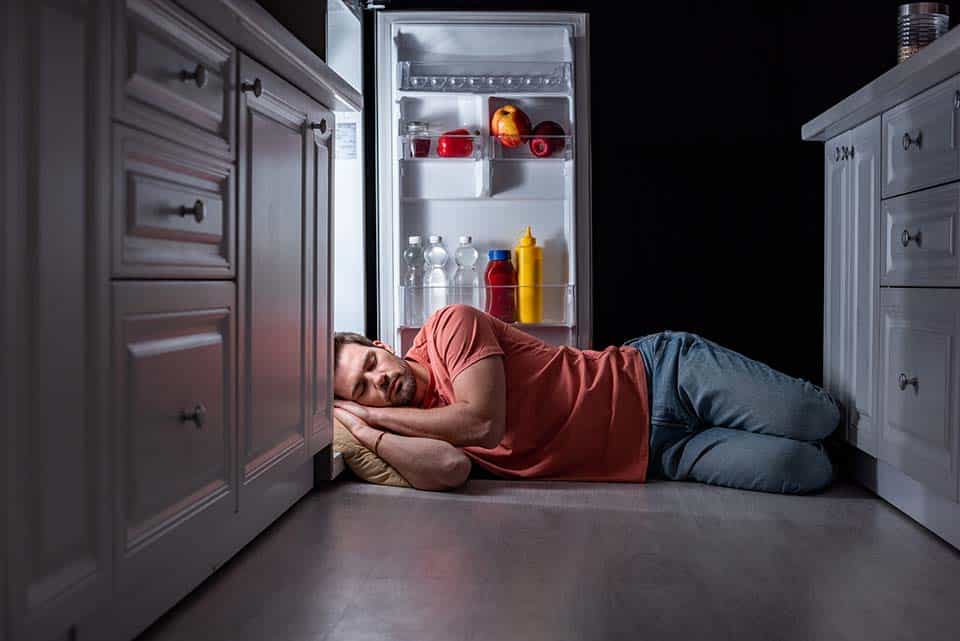
Do you often find yourself tossing and turning in bed, feeling like you’re roasting instead of resting? You’re not alone! 28% of adults report that being too warm gets in the way of a good night’s sleep.
Breaking that down by age,
36% of Gen Z,
33% of Millennials,
27% of Gen X, and
27% of Boomers
report being too warm interferes with their sleep quality.
If you’re tired of those restless, sticky nights, we’ve got your back. Let’s explore some budget-friendly hacks to help hot sleepers stay cool and sleep soundly.
Why Do I Get Hot When I Sleep?
Let’s start by addressing the sweaty sleepers in the room. No shame! Several factors could be contributing to your sizzling slumber:
- Bed Buddies: Sharing your bed with a partner or pets might be cozy, but their body heat might play a part in your discomfort, leading to a disrupted slumber.
- Hormonal Shifts: Hormonal changes, like those during pregnancy or menopause, can trigger night sweats, jolting you awake in the middle of the night.
- Meals & More: Eating big meals before bed can interfere with your body’s temperature regulation. While alcohol might initially make you feel drowsy, it increases your body temperature and disrupts a good night’s rest.
- Sleep Environment: If your bedroom is too hot or lacks proper ventilation, you may find it difficult to fall asleep or wake up in a sweat long before morning.
How To Stay Cool While Sleeping
Sure, you could spring for a new state-of-the-art air conditioning system for your home, but that’d cost you a lot of time and money. So, how can you beat the nighttime sleep heat without draining your wallet dry? Here are some pocket-friendly tips to help you enjoy a refreshing night’s sleep:
Stick To Breathable Fabrics
When it comes to battling the nighttime heat, your choice of fabrics is your first line of defense. Your PJs, bedding, pillows, and even your mattress topper play crucial roles in the temperature tango of your sleep haven. Opting for breathable fabrics is like giving your body a cool, comforting hug all night long.
For pajamas and bedding, choose natural, breathable fabrics like cotton, linen, or bamboo. These materials are lightweight and prevent that suffocating, sweaty feeling.
When it comes to pillows and mattress toppers, ensure they’re made from materials that don’t trap heat. Look for cooling gel options and breathable properties that won’t trap heat.
Ice, Ice Baby
When the night feels like it’s on fire, it’s time to bring in the chill squad. Ice and cooling packs can be your allies in the quest for a cooler sleep.
Target your body’s pulse points with an ice pack. Wrists, neck, and knees are all prime real estate. Cooling these areas helps your body drop its temperature swiftly, paving the way for a serene night’s sleep. For an easy, DIY version, try the rice sock hack! Fill a tube sock with rice, tie it off, and toss it in the freezer for an hour. Voila! You’ve got a quick cooling pad that won’t sweat or get your sheets wet.
Create A Cool Sleep Sanctuary
Become the master of your sleep domain by manipulating the environment for optimal airflow.
Who needs air conditioning when you’re the master of fans? A strategically placed box fan by an open window or a reliable standing fan directed at your bed can create a refreshing breeze. But if opening windows isn’t an option, orchestrate cross-ventilation with a pair of fans. Fresh air circulating in your room can make a world of difference, turning it into a haven of cool tranquility.
It doesn’t hurt to be proactive about keeping your room temperature cool! During the day, close your blinds or curtains to block out direct sunlight. This simple trick prevents your room from turning into a daytime oven, preserving its coolness.
No more sleeping hot for you! Try these hacks at home and sleep cool tonight!
Late Night Tea Time: The Sleep Benefits of Chamomile – Better Sleep Council
Better Sleep Council spokeswoman Lissa Coffey shares the secrets to a restful night’s sleep through the soothing and comforting world of chamomile tea.
It’s late, and you’re tired of tossing and turning in bed, so what do you do? Many of us find ourselves wandering towards the kitchen, searching for a snack. Instead of reaching for a bag of potato chips or the ice cream in the freezer, try remembering what grandma advised you to do: make a cup of tea. Grandmothers everywhere have passed down recipes for tea concoctions that can help us settle into slumber, and what’s the one common thread in all these soothing brews? Chamomile.
Explore some of the benefits of chamomile tea and discover a few additional ingredients you might want to have on hand next time you’re trolling the pantry at midnight!
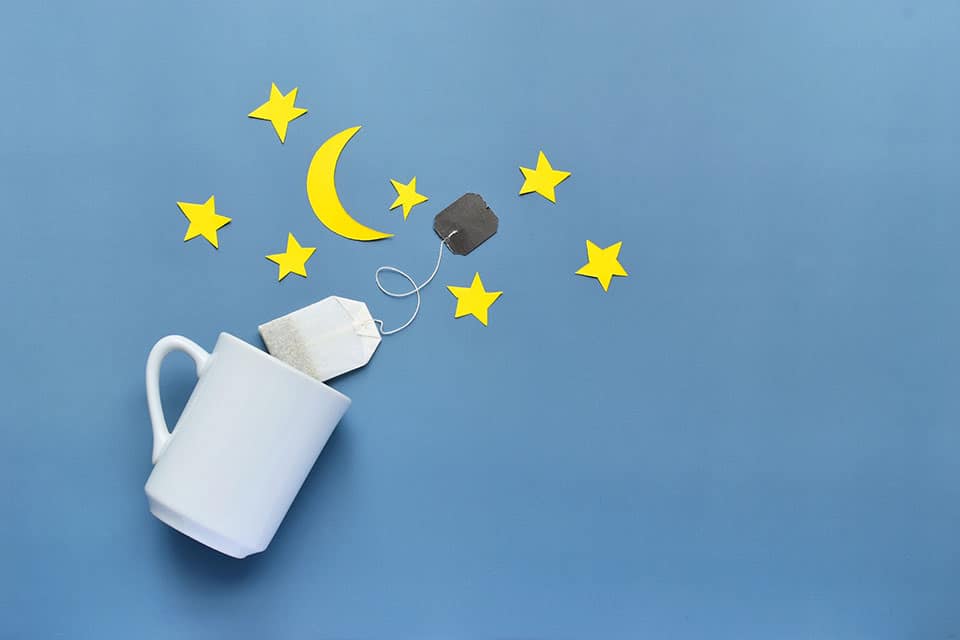
What is Chamomile Tea?
Traditional teas are made from the leaves of the tea bush, Camellia Sinensis, and conventionally contain caffeine. Herbal teas, on the other hand, are made from a combination of herbs, spices, or other plant materials. Chamomile tea, for example, is considered an herbal tea, not a “true tea,” because it comes from a plant with small daisy-like flowers.
You might already be familiar with chamomile, known for its healing properties and for its ability to aid in sleep. The sedative effect of chamomile tea comes from a flavonoid called apigenin, which creates a calming response in the brain, helping us feel sleepy and ready to crawl into bed.
Tea & Warm Milk
Warm milk has a long-time tradition as a sleep remedy, and for good reason. Milk and plant-based milks provide protein rich in an amino acid called tryptophan, which helps boost melatonin production.
When heated, milk helps raise internal body temperature, which can calm and relax us. The calcium in milk has a soothing effect on the nervous system. Plus, there’s the possible positive psychological effects—maybe because milk was a comfort food for us when we were babies.
Try it at home!
Dunk a bag of chamomile tea in your mug of warm milk. Sip your warm milky tea slowly while winding down for the night, preferably curled up on a cozy couch with a soft blanket wrapped around you!
Variations on Classic Chamomile Tea
If you prefer using tea bags, you can easily add a few different flavors to your cup or teapot. However, if you prefer loose tea, you can mix the flavors together and place them in an infuser.
To create your own personalized sleep brew, consider adding any combination of the following ingredients to your chamomile tea or warm milk:
- Turmeric, also known as Curcumin, is well known to help ease inflammation. Turmeric root is delicious with chamomile tea. Simply add a few thin slices to your cup for extra sleep benefits.
- Nutmeg is a powerful spice and has natural sedative qualities. Plus, its warm aroma pairs wonderfully with chamomile tea to enhance relaxation and improve sleep quality. However, nutmeg can be quite potent, so be sure to use it sparingly to avoid adverse effects.
- Valerian is a muscle relaxant and a strong sleep aid. Valerian root, on its own, tastes kind of earthy and is not very enjoyable to drink; blending it with chamomile or any of these other variations of ingredients makes it a lot more palatable.
- Ginger root is great for digestion and also has antiviral and antibiotic properties. If you can’t sleep because you have an upset stomach or a cold, a few slices of ginger is nice to add to your tea.
- Saffron, valued for its calming properties, promotes tranquility and aids in achieving a peaceful night’s rest, making it a great choice for enhancing your evening tea.
- Cinnamon is high in cinnamaldehyde, responsible for many of its health benefits. Cinnamon helps to lower blood sugar levels and fight infections. An easy way to get just the small amount you need and not overpower the other flavors is to stir your tea with a cinnamon stick.
- Honey contributes to the release of melatonin in the brain and gives a natural sweetness to the tea. Honey also supplies the liver with glycogen storage, giving it fuel to recover during rest so that it doesn’t have to produce stress hormones. This way, the body can rejuvenate more easily, helping us to sleep more soundly.
- Himalayan salt contains minerals such as magnesium, essential for relaxation and stress reduction. You just need a little bit. A pinch will do.
- Coconut oil is a healthy fat that helps in the production of sleep hormones. Half a teaspoon melts easily in the hot water of tea and helps herbs to assimilate into the body quickly.
Remember…
At the end of the day, there is no magical elixir or tea combination that can help you sleep if your mattress is in bad shape. A quality mattress is the foundation of a good night’s sleep. If you’ve had yours for longer than 5-7 years, check the mattress for lumps and bumps and signs of wear. It’s probably time to get a new one!
Cheers to a wonderful night’s sleep!
3 Benefits of Sleep for Brain Health – Better Sleep Council

Better Sleep Council spokeswoman Lissa Coffey shares three reasons why sleep is essential for brain health.
Sleep and Brain Health
We all know that sleep is essential for good health. But did you know just how important sleep is for the health of the brain? Even though we may be fast asleep, the brain is still working for us, still functioning and doing its job to keep us healthy.
Here are just three (of the many!) ways that sleep helps us keep our brains in tip-top shape.
General Housekeeping
Sleep gives our brains the chance to rest and reset.
The brain is always active, with neurons constantly firing. When we are awake, we constantly have jobs for the brain to do; it’s always busy working for us. Then, when we go to sleep, the brain has a chance to catch up and to clear out and recycle toxins through a drainage system called the “glymphatic system.” This is vital because scientists say that a build-up of waste products in the brain is linked to various brain disorders.
Memory & Learning
Sleep improves our learning capability and capacity by helping the brain to create and consolidate memories.
The learning process is made up of the 3 Rs: Reception, Retention, and Recall. Getting a good night’s sleep before we learn something helps the brain to be more receptive; sleep prepares the brain for learning. Good sleep before we learn also helps the brain to retain short-term memory, so we learn more quickly. Then after we have learned something, it is important to get a good night’s sleep so that we improve our long-term memory and our recall. Sleep helps the memories to “stick” so that we can retrieve them when we need them.
Processing & Emotions
Sleep helps us make connections and regulate emotions.
During sleep, our brain can make unexpected connections that might now have been seen in the waking state. How many times have you woken up with that “aha” moment or been able to solve a problem that has eluded you during the day? Sleep gives the brain a chance to process all the various stimuli that we are exposed to during the day, bringing some order to it all. It helps us make sense of things and pick out what is relevant in any given situation.
Sleep is also a great tool for helping us to process emotions. It gives us a different perspective on things. So the tip to “sleep on it” before making a big decision is definitely good advice! On the other hand, the phrase “Never go to bed angry” is not good advice. Rather than stay up all night fighting and wearing yourselves out, call a time-out and get some sleep. Chances are that you’ll wake up with a new outlook, and the anger will have subsided. Relationship saved!
Start Sleeping Better
There are two great ways to ensure that you get a good night’s sleep.
The first is to have a sleep routine. Get to bed at the same time each night. Turn off all technology one hour before bedtime. Computer screens keep the brain active, so it’s hard to wind down when you go straight from the screen to bed. Instead, use this time to read a relaxing book, listen to some music, do some gentle yoga poses, or take a nice bath. You need that transition time between activity and sleep.
The second way to get a good night’s sleep is to create for yourself a sleep sanctuary. A mattress is the foundation of a good night’s sleep. Make sure you have the best mattress that you can afford, and check often for signs of wear and tear. If your mattress is older than 5-7 years old, it’s probably time for a new one. Make sure your room is cool, dark, and comfortable. Keep clutter out of the bedroom, and make sure that your bedroom doesn’t look like an office. Your bedroom should be used for sleep and sex only!
Want to learn more about sleep? Check out these blog posts:
How to Know How Much Sleep You Need for a Restful Night
Sleep Tracker Showdown: Fitbit vs. Apple Watch vs. Garmin – Better Sleep Council

How did you sleep last night?
When someone asks you that question, you generally have a good idea of how you slept—or at least how you felt once you woke up. But with sleep trackers, you can measure your sleep experience in ways you never imagined.
Fasten your wristband and join us as we explore the world of sleep trackers and uncover how you really slept last night.
Wearable sleep trackers offer a unique look into the world of sleep. These devices, most commonly worn around the wrists, use sensors to record movement, heart rate, and sometimes even oxygen levels. Monitoring these factors while you sleep can shed light on your nocturnal habits, revealing the answers to questions you didn’t even know you needed the answers to…
Are you tossing and turning throughout the night without even realizing it?
How quickly do you fall asleep after turning off the lights?
Do you sleep better with the heat off?
But before we delve into the specifics of individual sleep trackers, let’s demystify some of the basics.
How Do They Work?
Most sleep trackers use sensors like accelerometers to detect movement and heart rate monitors to record data as you sleep. The trackers then use this data to estimate when you enter in and out of different sleep stages, how long you’re sleeping, and even the quality of your sleep.
The Sleep Score
Your sleep score, similar to a nightly report card, boils down all of the sleep data gathered throughout the night into a singular, numerical representation of your night’s rest. But not all sleep trackers provide you with a nightly sleep score, and not all sleep scores are alike.
While a sleep score might offer insights into some of your lifestyle and sleep patterns—maybe you sleep better when you’ve worked out during the day, or your sleep score suffers after a night out drinking with friends—your sleep score is just one measure of how well you slept. It’s also important to track other sleep-success measures. Did you wake up feeling refreshed and ready for the day? Or were you tossing and turning all night long?
Now that we have some sleep tracker basics out of the way, let’s shift the spotlight to the contenders: Fitbit vs. Apple Watch vs. Garmin.
Fitbit vs. Apple Watch vs. Garmin: A Head-to-Head Comparison
In this sleep tracker showdown, we’ll look at a few of the key characteristics of three common wearable sleep trackers and consider their versatility, user-friendliness, and sleep-tracking features.
Fitbit
Sleep Tracking: Fitbit excels in its simplicity and product options. It shares insights into your sleep duration, consistency, and different sleep stages, offering a comprehensive snapshot of your night.
Fitbit also gives you an overall sleep score (0-100) based on three individual sleep scores (duration, quality, and restoration). The sleep score ranges are:
- Excellent: 90-100
- Good: 80-89
- Fair: 60-79
- Poor: Less than 60
User-Friendliness: Fitbit is lauded for its user-friendly interface and straightforward sleep score, making it accessible for those new to sleep tracking.
Overall Versatility: Fitbit’s strength lies in its simplicity and focus on core features, activity tracking, health metrics, and fitness tools, making it an excellent choice for users with an active lifestyle.
Apple Watch
Sleep Tracking: Beyond its smartwatch prowess, the Apple Watch sleep tracking features measure sleep duration, heart rate, and movement disturbances, but you won’t wake up to find a sleep score in the morning. Fortunately, you can use third-party sleep analysis Apple Watch apps for a deeper insight into your sleep.
User-Friendliness: For those already familiar with the Apple ecosystem, the Apple Watch ensures a user-friendly experience and easy compatibility across accessories.
Overall Versatility: The Apple Watch offers an extensive range of smartwatch features, making it an ideal choice for those seeking a versatile accessory that can take them from day to night.
Garmin
Sleep Tracking: Identical to Fitbit’s numerical ranking system, Garmin sleep tracking assigns a sleep score on a scale from 0-100 to summarize the overall quality of your sleep. This number is calculated based on how long you slept, how well you slept, and evidence of recovery activity occurring.
User-Friendliness: Garmin’s interface may have a steeper learning curve, but it rewards users with a variety of detailed health metrics beyond sleep.
Overall Versatility: With its emphasis on holistic health, Garmin appeals to users aiming for a comprehensive health-tracking experience with an active, physical lifestyle.
Choosing Your Sleep Score Champion
The journey to better sleep awaits, and a wearable sleep tracker might be the compass that will help guide you there. When choosing the wearable that is right for you, be sure to consider your lifestyle, preferences, and the features that resonate with your sleep-tracking goals.
Here’s to more restful nights and energized mornings!
The Bed Bug Battle: Defend, Detect, Defeat! – Better Sleep Council
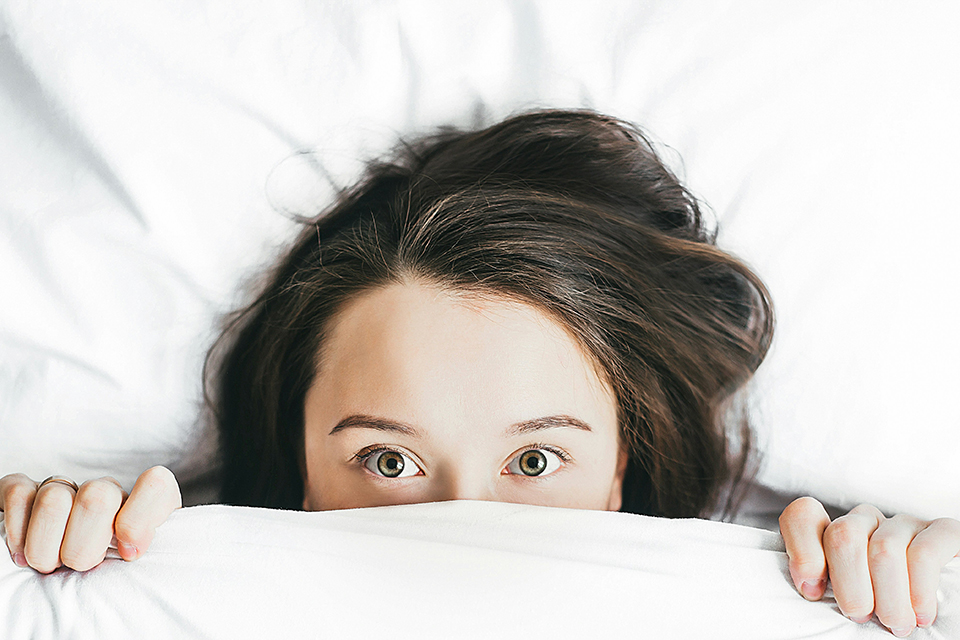
| DISCLAIMER: If you believe that your home is infested with bed bugs, be sure to call your local exterminator or pest control professional to deal with the problem. |
Concerned about bed bugs? You’re not alone! News of bed bug outbreaks in cities like Paris has prompted many to think about how to protect themselves from these unwelcome guests.
Whether you’re a seasoned traveler or just wary of these critters making their way into your space, learn how to check for these unwanted invaders. Plus, we’re sharing DIY bed bug treatment options and the best strategies to get rid of bed bugs for a comfy, cozy, bed-bug-free night’s sleep.
The recent surge in bed bug infestations globally has sparked concern. The increase is attributed to factors like increased travel and the bed bugs’ evolving resistance to insecticides, turning them into resilient “superbugs.” These savvy hitchhikers can travel not only within mattresses but also latch onto clothing, suitcases, and hand luggage, exploring the world one unsuspecting individual at a time.
Can Bed Bugs Travel Home With You?
Yes, but fear not! While bed bugs are making headlines, it doesn’t mean every corner (of the world or your mattress) is infested. You can take precautionary measures to avoid bringing these critters home.
- Before settling into any space, check for any signs of infestation (keep scrolling), even if you’re not a frequent traveler.
- Keep your suitcase off the bed (bed bugs’ favorite hiding spot) and unpack using a luggage rack.
- When you return, unpack your suitcase outside of your bedroom, preferably on a hard floor, and wash every item of clothing—even those you didn’t wear.
Identifying Bed Bug Signs
Now, let’s talk about detection. Knowing how to spot the signs early is crucial for effective bed bug control and getting a good night’s sleep. Waking up with unexplained itchy bites, spotting tiny dark spots on sheets, or catching a musty odor—these could be signs of a bed bug infestation. Bed bugs are sneaky, but you can outsmart them with some DIY detective work.
DIY Detective Work: Checking for Unwanted Slumber Buddies
If those warning signs send alarm bells ringing in your head, here’s how (and where) to check for the pesky intruders.
STEP 1: Install bed bug interceptors under bedposts. These handy devices trap bed bugs attempting to climb up or down, providing an early warning system. This way, you can detect their presence before a full-blown infestation.
STEP 2: Grab a flashlight and magnifying glass to inspect mattress seams, cracks, and crevices. Bed bugs are experts at hiding, so be thorough.
STEP 3: Assess how far they’ve infiltrated your sleep sanctuary. After you’ve searched the bed, scan the surrounding area. Check the bed frame, headboard, and nearby furniture. Bed bugs prefer tight spaces, so pay special attention to seams, folds, and potential hiding spots.
STEP 4: Now that you’ve completed your reconnaissance mission, it’s time to prepare for battle.
Taking Charge: How To Get Rid of Bed Bugs
While it may feel like a bed bug infestation means defeat is near, fear not. The battle against bed bugs is not a lost cause. Arm yourself with effective bug bite extermination strategies and regain control of your sleep domain.
Deep Clean and Declutter
Clean your living space, vacuum regularly, and wash and dry bedding and clothing on the highest heat settings. Be sure to dispose of highly infested items (bye-bye vintage armchair. This time you’re going to the dump)
DIY Steam Treatment
Steam clean your mattress, furniture, and other potential hiding spots. The heat is lethal to bed bugs at all life stages.
Natural Repellents
Try natural repellents like Diatomaceous Earth (the pesticide version), a non-toxic powder that dehydrates and kills bed bugs.
Professional Help
If the infestation persists, don’t hesitate to call in professional help. From insecticides to widespread fumigation and heat treatments, exterminators have the expertise and tools to tackle bed bugs head-on.
Sleep Soundly & Bug-Free
In the battle against bed bugs, vigilance is key. Regular inspections, swift action, and a clean environment can help get rid of bed bugs, but if you’re concerned, please seek assistance from a bed bug exterminator or pest control professional.
Sleep tight, and don’t let the bed bugs bite!
Want to learn more about sleep? Check out these blog posts:
How to Know How Much Sleep You Need for a Restful Night
Lucid Dreams, Hypersomnia & More: 6 Facts About Unusual Sleep Phenomena – Better Sleep Council
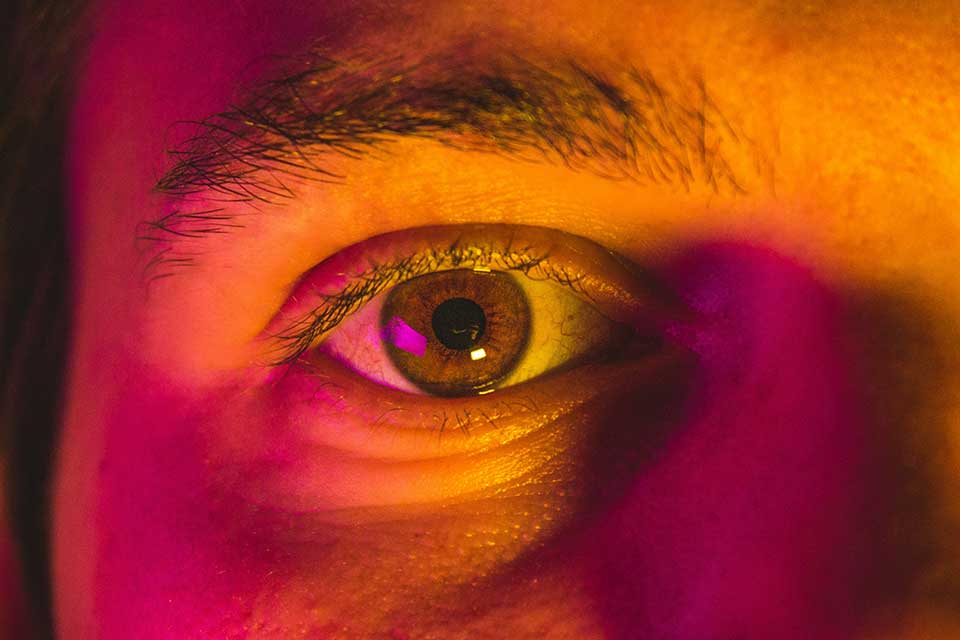
“When we close our eyes and enter the realm of dreams, our minds embark on journeys beyond our waking comprehension.” – Unknown
Explore different aspects of sleep phenomena, uncovering interesting facts and shedding light on the unique events that happen while we sleep!
From lucid dreaming to episodes of sleepwalking and talking, and conditions like hypersomnia, insomnia, and sleep paralysis, these sleep phenomena provide insight into the complexities of our sleep experiences.
Lucid Dreaming
About 50% of people have experienced lucid dreams in their lives, while about 20% lucid dream regularly.
What is lucid dreaming?
Lucid dreaming is a unique state where you become aware that you’re dreaming while still in the midst of a dream. In this vivid and immersive experience, dreamers often gain the ability to control certain aspects of their dreams, transforming the narrative to their liking. Lucid dreaming occurs during the rapid eye movement (REM) phase of sleep, typically in the later hours of the night.
Sleep Walking
If a parent sleepwalks, their child has a 47% chance of sleepwalking. If both parents have a history of sleepwalking, the chance increases to 62%.
What is sleep walking?
Sleepwalking, or somnambulism, is a unique sleep disorder where an individual engages in complex activities while still in a state of deep slumber. This phenomenon usually occurs during the non-rapid eye movement (NREM) phase of sleep, particularly in the first half of the night. Although more common in children, sleepwalking can persist into adulthood.
Sleep Talking
Sleep talking is more common in children, with roughly 50% of kids aged 3-10 experiencing somniloquy at least once a year.
What is sleep talking?
Sleep talking, or somniloquy, is a sleep-related phenomenon where individuals vocalize during their sleep without being aware of it. This typically occurs during the non-rapid eye movement (NREM) phases of sleep, particularly during the transitions between sleep stages. While the exact cause of sleep talking is not fully understood, stress, sleep deprivation, and certain medications can contribute to its occurrence.
Hypersomnia
Excessive daytime sleepiness, a key feature of hypersomnia, can be a symptom of underlying conditions like sleep apnea or narcolepsy.
What is hypersomnia?
Hypersomnia is a sleep disorder characterized by excessive daytime sleepiness, leading to prolonged and unrefreshing naps throughout the day. Unlike feeling tired due to lack of sleep, people with hypersomnia can struggle to stay awake and alert despite getting sufficient nighttime sleep, impacting daily functions and affecting work, school, and social activities.
Insomnia
Women are nearly twice as likely as men to experience insomnia.
What is insomnia?
People with insomnia often face challenges falling or staying asleep, leading to daytime fatigue, irritability, and impaired concentration. This condition can be acute, lasting a short time, or chronic, persisting for weeks or months, and causes can range from stress and lifestyle factors to underlying medical conditions.
Sleep Paralysis
Different cultures have attempted to explain sleep paralysis through folklore and mythology, such as the “pisadeira” in Brazil and the “kanashibari” in Japan.
What is sleep paralysis?
Sleep paralysis is a phenomenon in which a person temporarily experiences an inability to move or speak while falling asleep or waking up. It occurs due to a brief disruption in the transition between sleep stages, particularly the rapid eye movement (REM) phase. During episodes, individuals may feel a sense of pressure on the chest and vivid hallucinations.
Want More Sleep Content?
We think you might like these posts…
3 Benefits of Sleep for Brain Health
Sleep Cycle Calculator: Unlocking the Secrets of Your Nightly Rhythms – Better Sleep Council
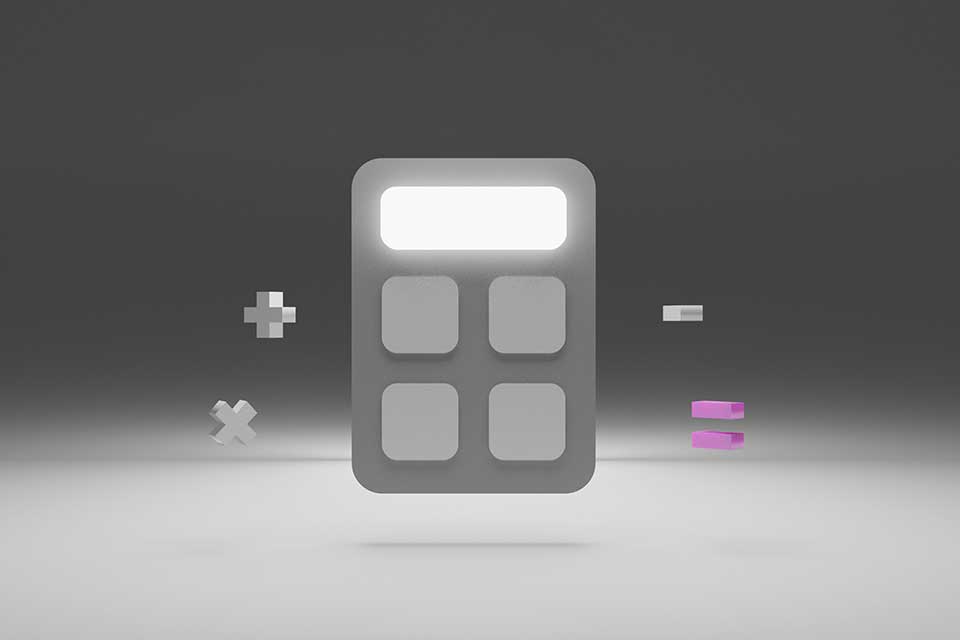
How much could 20 minutes of sleep really affect how well you wake up in the morning?
Well, if you want to wake up feeling refreshed and revitalized (who doesn’t!), those 20 minutes could help you wake up at just the right time—in between sleep cycles.
Discover the secrets behind sleep cycles and learn how using them to calculate your ideal wake-up or bedtime can help you feel rejuvenated and ready to take on the day.
Before we jump into calculating sleep cycles, let’s break down what it is about sleep cycles that make them worthy of a little sleep math.
Sleep isn’t a uniform state; instead, it consists of different stages that repeat throughout the night. When you sleep, you cycle through two phases:
Phase 1: Non-REM Sleep
- Stage 1: The transitional stage between wakefulness and sleep.
- Stage 2: Light sleep. Heart rate slows and body temperature decreases.
- Stage 3: This stage is called slow-wave sleep. Heart rate further decreases, blood pressure drops, and breathing is slow and rhythmic.
- Stage 4: Deep sleep. Blood pressure, heart rate, and breathing are all very low and it’s difficult to wake up from deep sleep.
Phase 2: REM Sleep
After non-REM sleep comes REM sleep, a lighter stage where blood pressure, heart rate, and breathing increase and dreaming occurs.
But sleep isn’t exactly cyclical. We don’t move through the sleep cycles as you might initially expect. After drifting off to sleep, we shift from stage one to stage two, three, and four, THEN back to three, two, then one, before finally shifting into REM sleep. From there, the cycle starts again, with each sleep cycle lasting roughly 90 minutes.
It’s recommended that you go through 4-6 of these sleep cycle waves in order to get 6-9 hours of quality sleep. This suggests that it isn’t the total number of hours slept that helps us feel refreshed and ready to start the day, but the number of sleep cycles we receive. Even a mere 30 minutes could mean the difference between finishing a sleep cycle and waking up energized or awakening in the middle of a cycle and feeling tired and groggy.
Sleep Cycle Calculator
Now that you have a basic understanding of sleep cycles, let’s talk about how you can optimize your sleep with a sleep cycle calculator. This tool considers the average sleep cycle duration (90 minutes) and aims to wake you up in between cycles, helping you feel more refreshed and alert.
Here are a few sleep cycle calculator tools:
Sleepopolis Sleep Time Calculator
Sleep Foundation Sleep Calculator
After inputting your desired sleep or wake time, these sleep cycle calculators use the average complete sleep cycle timeframe to calculate your ideal sleep/wake time. For example, if you want to wake up at 6:30 am, most sleep cycle calculators would suggest falling asleep at…
9 pm (for six cycles/nine hours of sleep),
11 pm (for five cycles/seven and a half hours of sleep), or
12:30 am (for four cycles/six hours of sleep)…
in order to wake up in between 90-minute sleep cycles.
Connecting the Dots: Sleep Hygiene & Sleep Timer
Understanding your sleep cycles is just one part of the puzzle. Everyone’s sleep needs are unique. Use sleep cycle calculators as a guide, but be open to adjusting based on how you feel each morning.
Additionally, consider incorporating some other beneficial sleep hygiene practices to enhance your overall sleep quality:
Consistent Sleep Schedule: Align your sleep and wake times as consistently as possible, even on weekends.
Create a Soothing Bedtime Routine: Wind down before sleep with calming activities like reading, gentle stretching, or meditation.
Optimize Your Sleep Environment: Ensure your bedroom is conducive to sleep—dark, quiet, and cool.
Limit Screen Time Before Bed: Minimize exposure to screens at least an hour before bedtime to promote the natural production of sleep-inducing hormones.
Watch Your Diet: Be mindful of food and drink, especially in the evening. Avoid heavy meals and stimulants like caffeine close to bedtime.
By combining the insights from your sleep cycles with the guidance of a sleep cycle calculator and adopting healthy sleep hygiene practices, you can unlock the secrets to a more restful night’s sleep.



